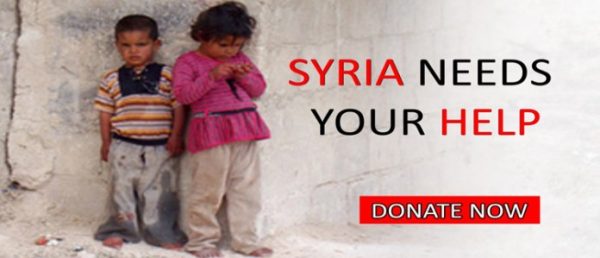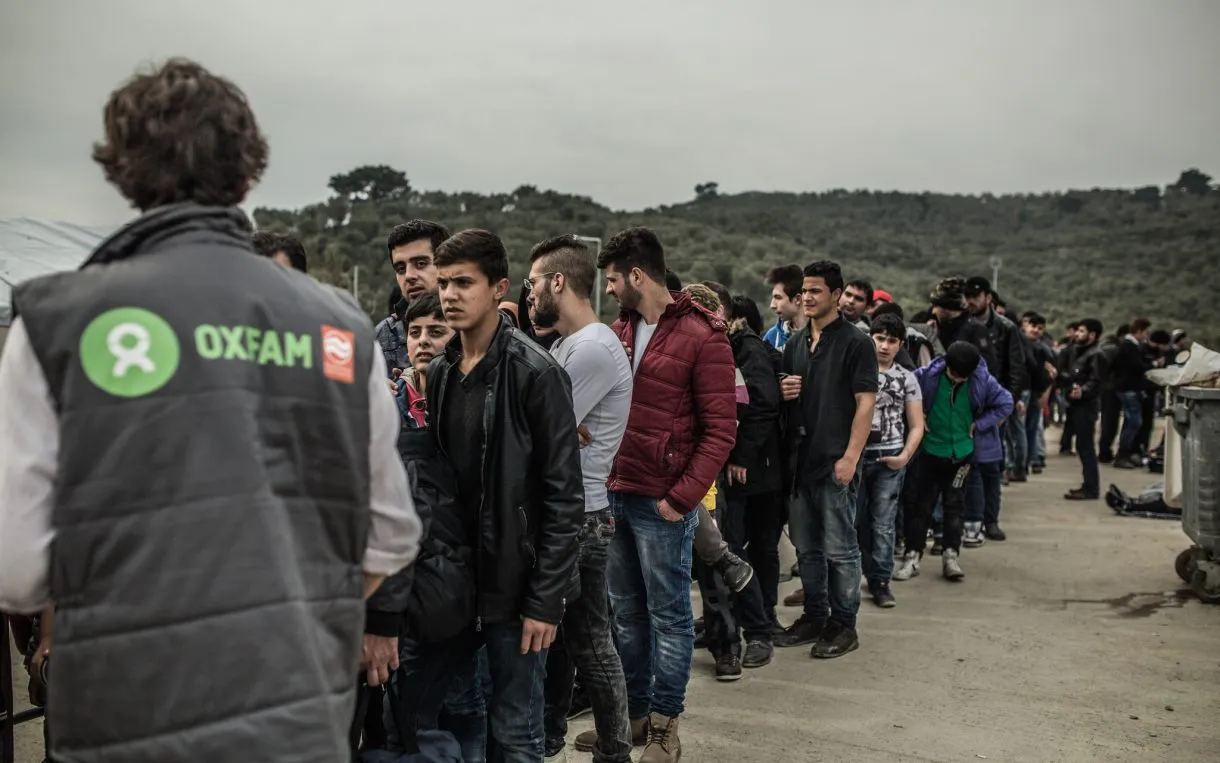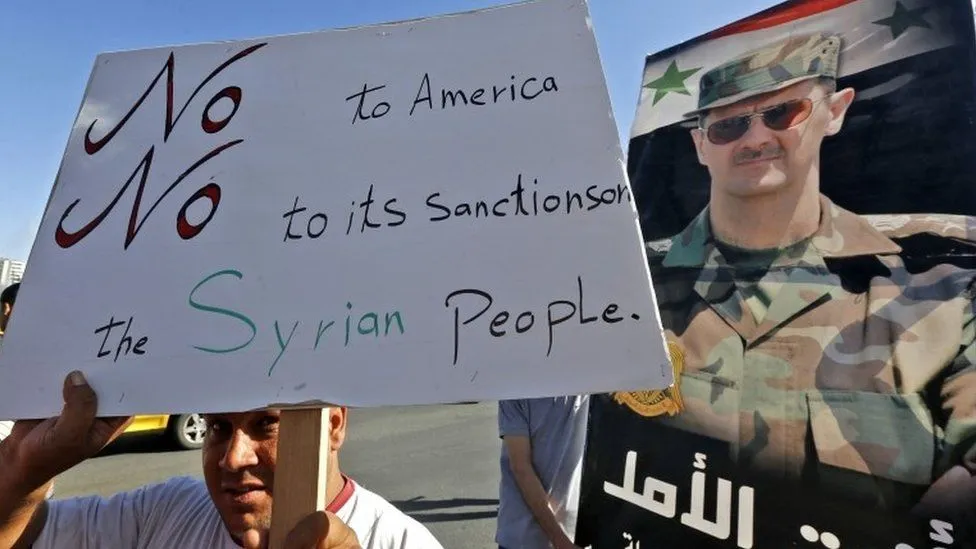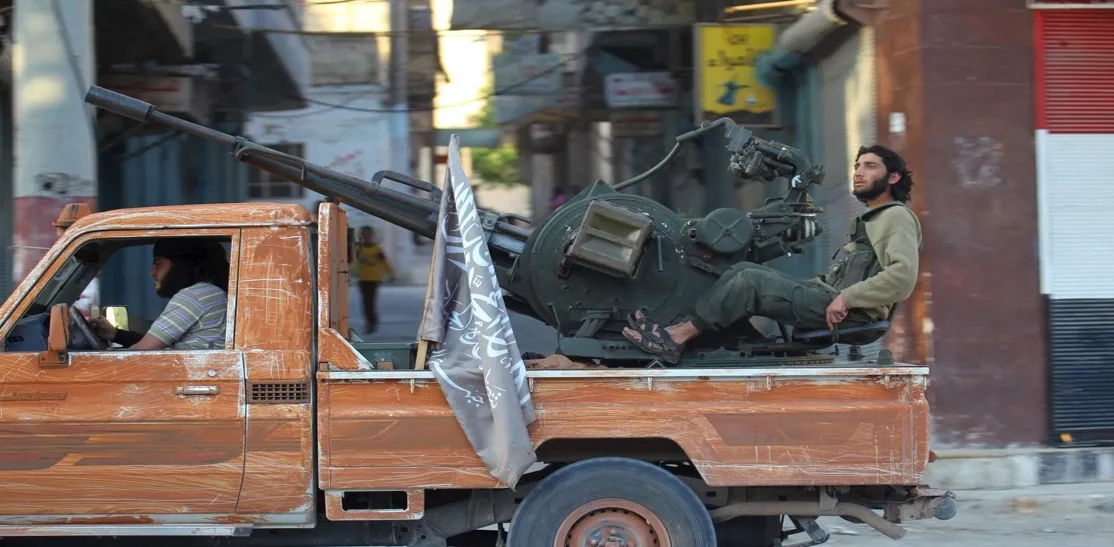Paul Larudee
• October 25, 2021
Are major charitable organizations supporting terrorist organizations through tax-deductible donations while denying aid to those they claim to serve?
Doctors Without Borders, the Syrian Emergency Task Force, the International Rescue Committee, the Syrian American Medical Society, the White Helmets, Syrian Forum USA, Islamic Relief USA, CARE, the Syrian American Council, and other major tax-deductible charities all advertise that they are providing humanitarian aid to Syrians. Their ads appear in Facebook, Twitter and other social media on a regular basis. But their aid is not reaching 6.5 million displaced and needy Syrians in Syria.
Some of the international charities do excellent work in other countries, but in the small portion of Syria where they provide services and supplies through proxies, their work is under the control of al-Qaeda affiliates and their aid is directed primarily to the fighters and their families.
This is the case for both medical services like Doctors Without Borders, and for delivery of food, medical and other relief supplies, hoards of which have been discovered in massive quantities in terrorist headquarters after removal of the terrorists. The civilians in areas formerly held by the fighters report that they often had to pay extortionist sums to get services or supplies.
The vast majority of displaced persons are in government-controlled Syria, where U.S. siege sanctions do not permit international organizations to distribute aid through Syrian charitable organizations such as the Syrian Red Crescent, the Syrian equivalent of the Red Cross.
The gap between the benevolent image the US empire likes to project and its repugnant sociopathic reality is of galactic dimensions.
The U.S. claims that humanitarian aid is exempt from the sanctions, but they permit aid to enter these areas only if the foreign charity distributes the aid through its own personnel (paid or volunteer). But very few organizations are prepared to create their own distribution system inside government-controlled Syria, and those who cooperate with terrorists fighting against Syria are not likely to be welcome in those areas.
In fact, only four U.S. charitable organizations can operate in most of Syria. The largest of these is the International Medical Corps, which provides medical aid throughout the world. In Syria it addresses psychosocial trauma, hygiene, malnutrition, and the COVID-19 pandemic. It provides personal protective equipment, and infection prevention and control, but not vaccines. Although it diagnoses malnutrition and reports that it is widespread, there is no indication that it provides actual food, perhaps for fear of violating U.S. sanctions.
The other three are tiny. One is the Adventist Development and Relief Agency, operated by the Seventh Day Adventist Church. It is authorized to operate in Syria, but there is no indication that it is currently doing so. Its website reports only that the organization offers aid to refugees through its office in Serbia.

Paraplegic ambulance driver receives physiotherapy provided by Syria Solidarity Movement. [Source: syriasolidaritymovement.org]
Another is SAWA (“together” in Arabic) the Syrian-American Women’s Charitable Association, based in Washington, D.C. It is also authorized to operate in Syria, but serves mainly the refugee population outside. The only aid inside Syria reported on its website is to support another organization, al-Mubarra, to provide clean water to refugees returning to Syria.
The remaining U.S.-based 501(c)(3) tax exempt charitable organization is the Syria Solidarity Movement, a small California-based nonprofit that helps needy Syrians on an individual basis through volunteers.
Its aid includes shelter, medical procedures, economic self-sufficiency and similar measures for destitute Syrians. Separately, it also advocates for human rights, including respect for Syrian sovereignty and territorial integrity, an end to U.S., Turkish and Israeli occupation of Syrian territory, and the lifting of all sanctions against Syria.
More than 30 other international relief organizations, mostly from Europe, also operate in government-controlled areas of Syria. But most are small and not well known, despite the important work that many of them do with often scant means at their disposal.
The best known is probably Oxfam, based in the UK, but it is an exception in terms of size and effectiveness. United Nations agencies like UNHCR and UNICEF also provide relief under conditions limited by the sanctions.
If you have responded to appeals for donations to help Syrians, you have probably learned that almost half the entire Syrian population have fled their homes due to the fighting and destruction since March 2011. The appeals have described the suffering, malnutrition, homelessness, disease, exposure and desperation of the population.
Unfortunately, these appeals come primarily from organizations that have no intention of helping the majority of this needy population. Why? Because this majority fled to government-held areas, never left Syria and chose not to live under the “protection” of terrorist organizations and their Turkish allies in occupied Idlib province and small portions of Aleppo province.
This means that the Syrian government, Syrian civil and charitable groups and the exceptional international organizations operating in government areas had to take responsibility as best they could for these displaced and desperate persons even as major Syrian agricultural and petroleum resources were being confiscated by the U.S. military and draconian sanctions were destroying the Syrian economy. These organizations did their duty and distributed the increasingly meager resources as best they could, but they had no help from most of the organizations that appeal for your donations.
Syria is suffering like few other places on earth. Although in 2010 it was largely self-sufficient, with no debt and healthy exports, that now seems a distant memory. The war is a main factor, of course, but the U.S. is confiscating (stealing) most of Syria’s oil and much of its agricultural production. Worse than all of this, however, have been the crushing economic sanctions imposed by the U.S. and its allies.

Six-year-old Ghazzal Khudeir’s father died fighting terrorists and her home was destroyed. She and her mother and two brothers were homeless until the Syria Solidarity Movement got a small apartment for them. Millions more face similar circumstances. [Source: Syria Solidarity Movement]
Social and medical services and education, including university, are free to all Syrians, but the sanctions have severely affected Syria’s ability to deliver those services. Even its once strong pharmaceutical industry cannot import the necessary components to make medications, and its hospitals cannot get replacement parts for medical devices.
The U.S. theft of Syria’s oil is crippling both income and the transportation sector, and its currency has dropped to one-fifth of its former value because the sanctions forbid most banking transactions with Syria. Syria cannot even repair many of the homes destroyed in the fighting, due to a lack of building materials.
The economy is in shambles and the 9% unemployment rate would be much higher if not for the flight abroad of millions of Syrian citizens, many or most of whom would prefer to return home if their country were free of occupying forces and crippling sanctions.
Where are your donations going? Some become aid to Syrian refugees that have fled to other countries. But in many cases, they end up in occupied Idlib, where accountability for the funds is tenuous at best. Idlib has seen a transformation of its traditional population in the last decade.
As al-Qaeda affiliated fighters armed with vast quantities of sophisticated U.S. weaponry (e.g., TOW missiles) began to inflict unsustainable casualties on the Syrian defenders, most Idlib natives fled to other parts of Syria still under government control, emptying the area of its original inhabitants.
In their place came a new population from two sources. First, the large numbers of radical foreign mercenaries began to bring their families from the countries where they were recruited, with the encouragement of the Turkish government and the international alliance that is attempting to install a Salafi/Wahhabi government in Damascus.
Second, as the Syrian army began to turn the tide and retake its territory with the help of its Russian, Iranian, and Lebanese allies, the Syrian government offered the opposition fighters the option of a) amnesty and reintegration into Syrian society or b) safe passage to areas not yet under government control, mainly Idlib.
The first option was open only to Syrian nationals, so the second became the choice of many foreign mercenaries as well as some diehard Syrian opposition fighters. This is how Idlib came to be populated by a dizzying array of al-Qaeda affiliates speaking a diverse group of languages and dialects, only one of which is Syrian Arabic.
As the territories held by the non-Kurdish Syrian “opposition” shrunk to less than 3% of the total area of Syria—mostly Idlib province—so did the size of the population they served, probably less than a million, with a large percentage of non-Syrians.
Furthermore, the control of that territory was split among hundreds of al-Qaeda affiliates of different sizes, each of which usually refuses access to international aid agencies in their mini-realm. As a result, the charities came up with a protocol that paired them with local opposition partners (aka Civil Service Organizations) registered in Turkey, many of them organized into an umbrella organization called the Syria Relief Network.
 [Source: reliefweb.int]
[Source: reliefweb.int]
These opposition CSOs act as proxies to deliver the aid through intermediaries that are trusted by the opposition groups. Baytna Syria is another organization that facilitates meetings in Turkey between the local proxies and the armed groups in order to arrange the protocols and logistics for the aid to be delivered to them at their camps within occupied Syria.
 [Source: scm.bz]
[Source: scm.bz]
The protocol was described in early 2017 in “Localisation and cross-border assistance to deliver humanitarian health services in North-West Syria: a qualitative inquiry for The Lancet-AUB Commission on Syria,” which gives a good picture of the situation as it was in 2016. By 2021 the players had changed and much of the territory was back in government hands, but the description still quite accurately reflects the “remote monitoring” of aid administration, with two or more degrees of separation between the international charities and the recipients.
This leaves accountability opaque at best for aid distribution, and at worst significant skimming by the intermediaries and the governing councils of the recipient groups. As the report says, “some local charities that claim to focus their work on orphans or widows actually only cater to orphans and widows of opposition fighters.” And even when the aid goes to its intended population rather than to intermediaries, to what extent is it helping needy Syrians rather than immigrant populations from other parts of the world?
In sum, the main international charity organizations are doing nothing to make things better for most Syrians, and their appeals for funds are misleading, since they fail to state that they do not operate in most of Syria. They do not transparently acknowledge in their appeals that they only serve small portions of Syria under the rule of al-Qaeda and its affiliates, or that some of its “local partners” have strong connections to the terrorists and that a significant portion of the population served is not even Syrian.
Sadly, this is what we have come to expect from “charitable” organizations that function at the behest of U.S. interests. Even when they provide needed aid, they do so only when it also serves U.S. hegemony in territories of interest to U.S. foreign policy. Furthermore, some get huge government grants but barely provide aid at all.
The White Helmets, for example, have received considerably more than $60 million. These funds are primarily for operations, liaison, legal counsel, administration, public relations and film production (propaganda), news feeds to networks and publications, and similar activities. Even their rescue work has been directed primarily to the fighters and their families.
Such organizations must therefore be considered allies of, or adjuncts to, the “rebel” fighters that the U.S. supports with lavish military aid that typically gets used by terrorist groups that the U.S. claims to be fighting but which the U.S. tacitly supports if they are against the Syrian government.
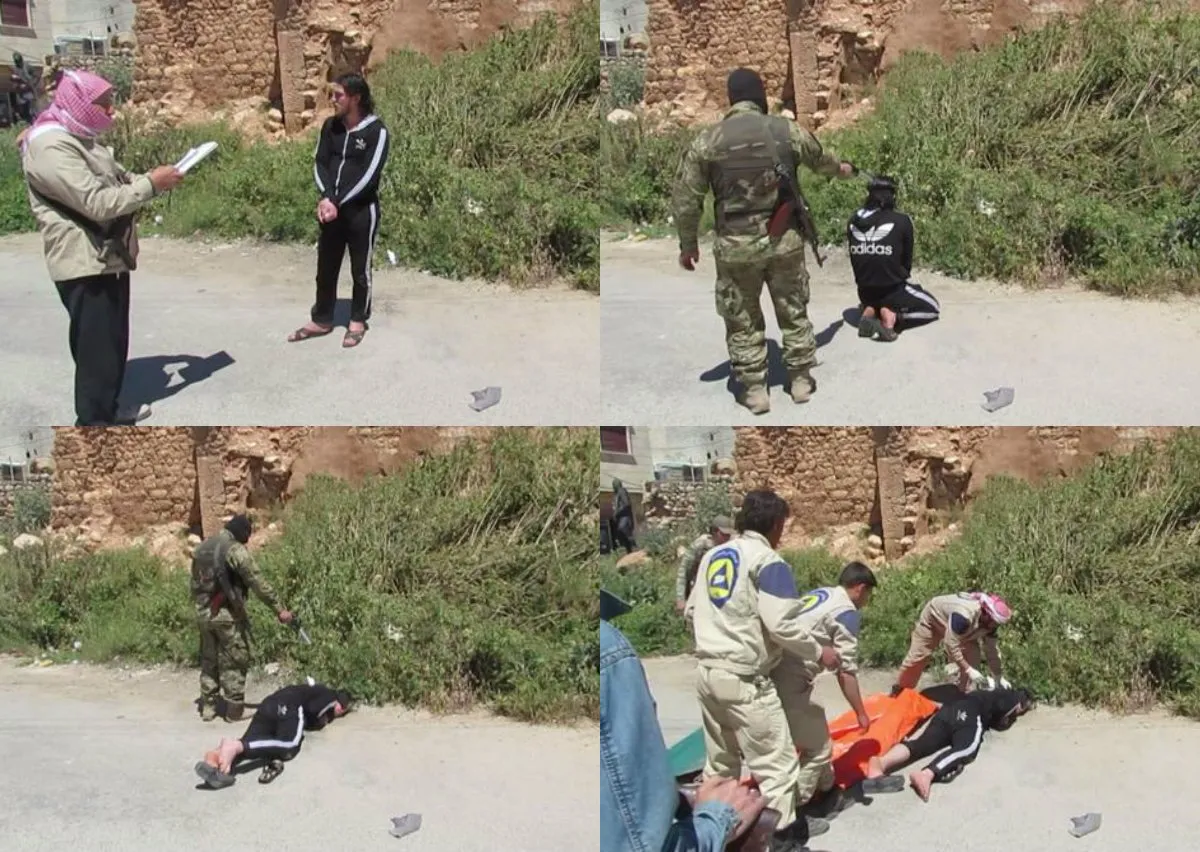
U.S.-funded White Helmets assist in public execution in rebel-held Syria. [Source: twitter.com]
Regrettably, the U.S. perceives the death, destruction and destitution of the Syrian people to be a desirable part of its campaign against Syria. The irony is that, by devoting billions of U.S. dollars of taxpayer money to create misery for Syrians, it also denies its own citizens the use of these funds for their benefit, bringing misery to them as well.
- What’s Really Happening in Syria
A Consumer Fraud Lawyer’s Mini-Primer
Robert Roth
(Republished from Covert Action by permission of author or representative)

The views expressed herein are solely those of the author and may or may not reflect those of The Greanville Post. However, we do think they are important enough to be transmitted to a wider audience.
All image captions, pull quotes, appendices, etc. by the editors not the authors.
YOU ARE FREE TO REPRODUCE THIS ARTICLE PROVIDED YOU GIVE PROPER CREDIT TO THE GREANVILLE POST VIA A BACK LIVE LINK.
![]() This work is licensed under a Creative Commons Attribution-NonCommercial 4.0 International License
This work is licensed under a Creative Commons Attribution-NonCommercial 4.0 International License
[premium_newsticker id=”211406″]
Don’t forget to sign up for our FREE bulletin. Get The Greanville Post in your mailbox every few days.




